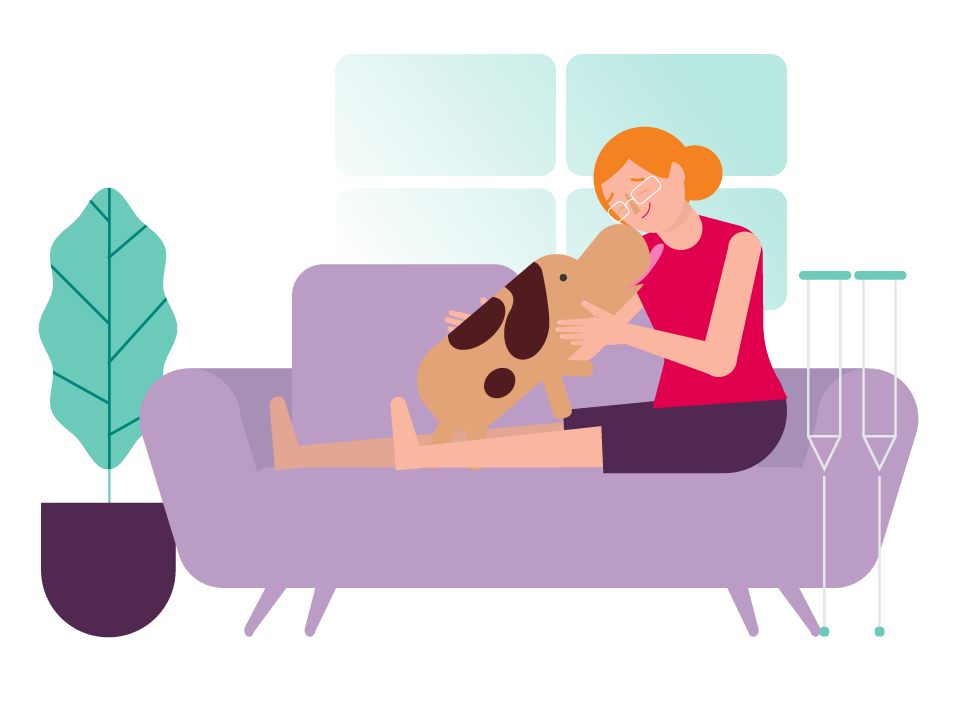There are two types of skin graft, and several different types of flap.
The type your surgeon recommends will depend on the site, size and the type of wound.
What’s the difference between a graft and a flap?
A graft is just the skin without a blood supply, whereas a flap is transferred with its blood supply intact. With a flap, larger amounts of tissue can be used, including muscle if required. Some reconstructions need both a flap and a graft.
Split thickness skin graft
In a split thickness skin graft, your surgeon removes the entire epidermis (top layer of the skin) and part of dermis (middle layer) from the donor site. Some of the dermis is left behind to help heal the donor site.
This type of graft is usually only done for large wounds or areas with a poor blood supply.
A split thickness graft is usually harvested from your thigh, buttock, calf or upper arms.
Your surgeon will secure the graft over the wound with some stitches, glue or staples, then cover it with a dressing or sponge. The donor site is dressed and left to heal.
After your split thickness skin graft, you’ll leave the dressing on the graft undisturbed for about 5–7 days. On the donor site, your dressing is left on for 1–2 weeks. The grafted site should heal in about 1 week and donor site in 2 weeks. You may experience more discomfort from the donor site than from the grafted site.
Full thickness skin graft
For a full thickness skin graft, your surgeon takes the entire epidermis and dermis to cover your wound. This type of graft is usually done for a small defect on your face, over a joint or where a tendon or nerves are exposed.
The graft is usually taken from an area where you have spare skin and the donor wound can be closed directly. Common donor sites are behind or in front of your ear, your upper eyelids, above your collarbone, inner arms, forearms or groin.
After harvesting, the grafted area is secured with stitches and covered with a dressing or sponge. The donor site is stitched back together and dressed with adhesive strips or an adhesive dressing.
After surgery, both grafted and donor sites may be left undisturbed for about 5–7 days or redressed. By this time the grafted and donor sites should be healed and your surgeon can remove any sutures.
Types of flap
There are many kinds of flaps, including:
Local flaps
These flaps are created from tissue next to the defect. They’re mostly done after removal of a skin lesion from your face. For example, a flap from the ‘smile line’ below your cheek could be used to repair a defect in your upper lip, lower nose or cheek.
Regional flaps
These are created with the tissues from the same general area where the defect is. For example, your doctor could reconstruct a defect on tip of your nose with a forehead flap.
Distant flaps
These types of flaps come from far away from the actual defect. There are 2 types of distant flaps:
- Pedicled flaps which come from another region to reconstruct a defect and are still attached to the donor site for its vascular supply. For example a pedicled flap can be used from your back to reconstruct your breast.
- Free flaps are completely detached from their donor site and the blood vessels are reattached to the blood vessels in the defect. For example, a free flap can be taken from your lower abdomen to reconstruct your breast.
Most grafts and local flaps are done under local anaesthesia and you can go home the same day. Regional or distant flaps are usually done under general anaesthesia. You may be able to go home the same day after a regional or distant flap but for some flaps you’ll need to stay in hospital. Your surgeon will talk to you about the best option for you.







